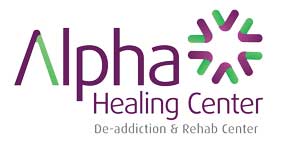Art therapy has myriad uses beyond the treatment of substance abuse and addiction. The American Art Therapy Association defines it as a medium through which an individual can address illness or stress, or even to achieve a higher level of personal development. It may be used in tandem with group therapy, individual therapy, or relapse prevention in the context of treating an addiction.
How Art Therapy Works
The idea of engaging in a therapeutic creation of art may seem a little intimidating if you’ve never picked up a paintbrush or molded clay in your hands. However, no one is going to judge your finished masterpiece. Its purpose is to help you tap into your subconscious thoughts. When you lose yourself in your creation, deeper emotions and thought processes can come to the fore and become expressed. You stop wondering what you’re going to have for dinner – or about indulging in the substance you’ve become addicted to. Your subconscious takes over.
The art you create does not necessarily have to be a painting or sculpture. The creative process is what matters, not the method of expression. Art therapy can include dancing, acting, singing or writing poetry. Your creation may prompt an intimate conversation with your therapist, bringing insights to light that you may have been unaware of before. It may convey something you feel uncomfortable putting into words.
Your therapist may even help you to create something, guiding you toward realization of some insight she’s realized but that you haven’t acknowledged yet. In group therapy, it can promote interaction with others – they may see something in your artwork that you were unaware of feeling or experiencing. Art therapy is enlightenment, carrying you back to reacquaint yourself with the individual you were before addiction.
Using Art Therapy Post-Recovery
Art therapy can be useful even after you’re in recovery. You might continue with it and compare your current works against those you created in the earliest days of your fight against addiction, gathering fresh insights that will arm you as you go forward and help you protect against relapse.
Creating art has been shown to reduce anxiety and tension, making it a powerful tool to use toward staying sober. Recovered addicts have turned to picking up a paintbrush or grabbing a microphone to prevent against relapse when urges strike to use again due to external stressful events beyond their control.
Art therapy is most healing when it’s engaged in with other methods of addiction treatment. It’s often an active component of holistic healing, which focuses on the entire person, not just the body. Its benefits are not restricted to treatment, however. You can engage in any creative process outside of the treatment setting to help restore your sense of self or achieve calm.






